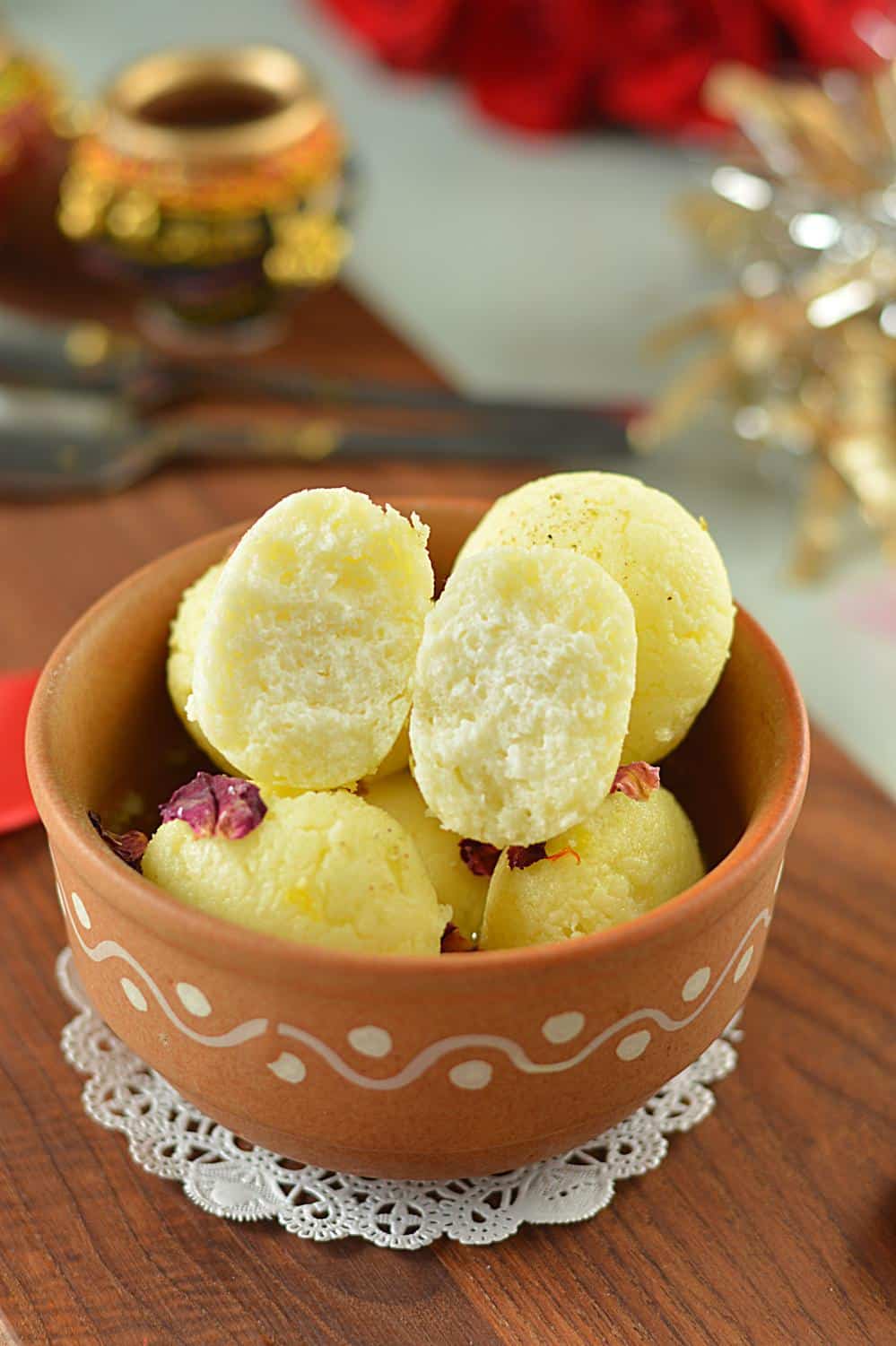
Rasgulla is a traditional Indian sweet that is famous for its soft and fluffy texture. It is made from paneer or chenna cheese (curdled milk cheese) that is boiled in a sugar syrup. The result is a sweet and juicy delight that melts in your mouth.
It has a long history in the Indian subcontinent region, with its origin disputed between the regions of Bengal and Odisha in India. The history of this sweet dish dates back over 150 years, and is attributed to different communities.
In West Bengal, Rasgulla is considered a centuries-old traditional dessert. It is said to have been invented in the 19th century by a confectioner named Nobin Chandra Das in Kolkata. This sweet was initially known as ‘rasgolla’ and became a symbol of Bengali culinary culture.
In Odisha, this sweet is said to be even older. It is locally known as ‘rasa gola’. The region celebrates rasgulla as a dessert that has roots in the local culture.
In 2015, India obtained Geographical Indication certification for West Bengal rasgulla, which protects the name and authenticity of the sweet in that specific region.
Rasgulla is typically served chilled or at room temperature. It is served dipped in the syrup in which it has been cooked, which gives it a juicy and tender texture. It can be served alone or with other Indian sweets. It is generally found at celebrations and festivities.
It is eaten with a spoon, although you can also use your hands. It is usually enjoyed straight from the syrup it is in.
There are different variations of rasgulla depending on the region of India taken into account, some of the best known are:
- Rasgulla with Saffron: Added with saffron threads for a distinctive colour and aroma.
- Rasgulla with cardamom: Incorporation of cardamom in the syrup.
- Rasgulla with filling: Some modern versions include fillings of fruits or exotic flavours.

How to prepare homemade rasgulla
Ingredients:
- For the chenna:
- 1 liter of milk (preferably whole)
- 2-3 tablespoons of lemon juice or vinegar (to curdle the milk)
- 1 cup cold water (to cool the chenna)
- Sugar syrup:
- 2 cups of sugar
- 4 cups of water
- 2-3 crushed cardamoms (optional)
- 1 teaspoon rose essence or rose water (optional)
- Prepare the chenna:
- Heat the milk in a large saucepan over medium heat until it begins to boil.
- Reduce the heat and add the lemon juice or vinegar slowly, stirring gently. The milk will begin to curdle and separate into whey and curds. If the milk does not curdle completely, add a little more lemon juice or vinegar.
- Remove the pan from the heat and pour the mixture into a strainer lined with a muslin cloth or clean cloth. Rinse the chenna with cold water to remove the acidic taste of the vinegar or lemon.
- Let the chenna drain for about 5-10 minutes. Then, gently press it to remove excess water. Knead the chenna with your hands until you get a smooth, even dough.
- Form the balls:
- Divide the chenna dough into small walnut-sized balls, making sure there are no cracks on the surface.
- Prepare the sugar syrup:
- In a large saucepan, combine the sugar and water. Bring to a boil, stirring occasionally, until the sugar is completely dissolved.
- Add the crushed cardamoms if using. Allow the syrup to simmer for a few minutes until well blended.
- Cooking Rasgulla:
- Reduce the heat to medium-low and add the chenna balls to the hot syrup. Cook the balls on low flame for about 15-20 minutes, or until the balls puff up and become fluffy. Make sure the balls are well submerged in the syrup.
- Stir the balls carefully from time to time to prevent them from sticking together.
- Chill and serve:
- Once the balls are cooked, remove the pan from the heat and let the rasgulla cool in the syrup. It can be served chilled or at room temperature.
Tips:
- Consistency: The texture of rasgulla depends on the quality of chenna. Kneading the dough well is crucial to get a soft and fluffy texture.
- Spices: You can experiment with different spices or flavors, such as saffron or rose water, to give the syrup a special touch.

Source: https://reporteasia.com/cultura/cocina-asiatica/2024/08/18/aprende-dulce-tradicional-india/


